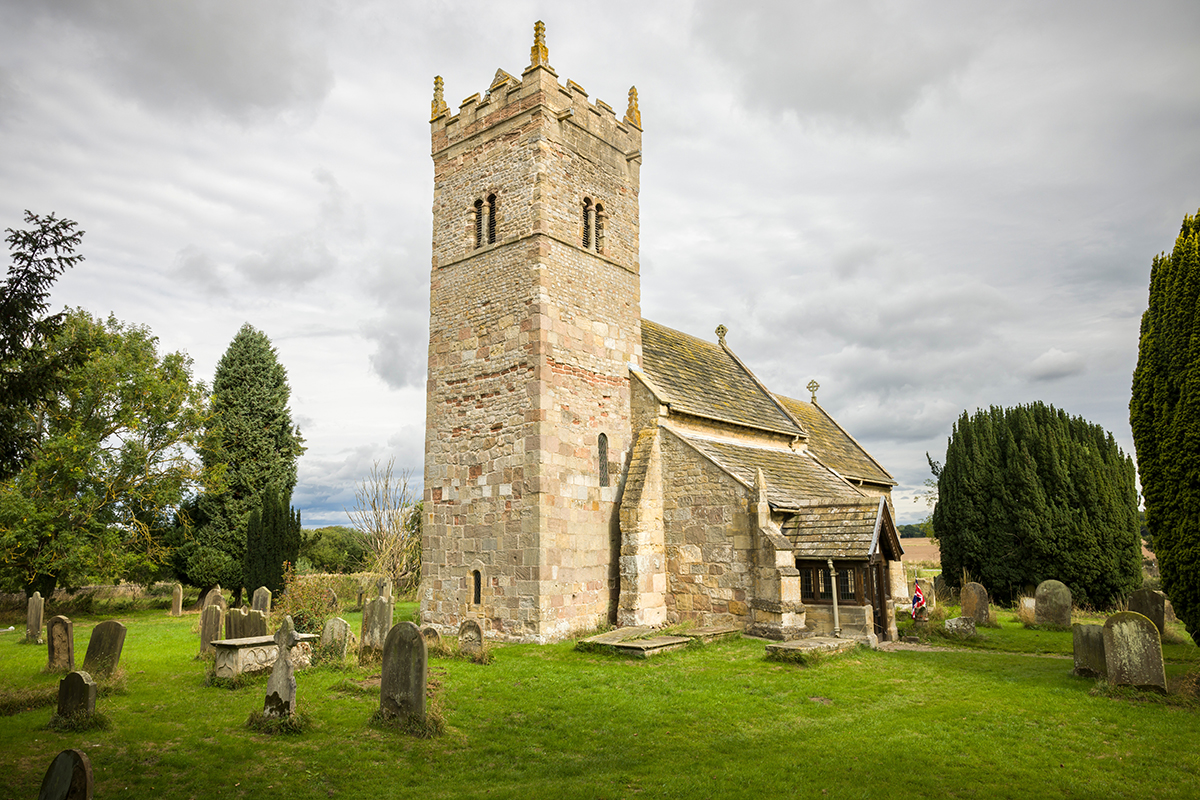We have discussed so far the nature of the 18th-century evangelical revival in Britain through the eyes of the most well-known names, John and Charles Wesley and George Whitefield. From the 1740s onward, communities across the nation experienced the impact of the revival through the pioneering ministries of many more dedicated individuals, however. William Grimshaw is an example with a fascinating and extraordinary story. To some he was a hero; to others, “mad Grimshaw.”
The setting for his ministry was the parish of Haworth, set among the rugged hills and steep valleys of Yorkshire, about 10 miles from the city of Bradford. Today the village is best remembered for its literary connections with the Bronté family. Grimshaw was the minister from 1742 until his death in 1763. He formed deep and lasting friendships with both the Wesley brothers and George Whitefield, all of whom preached regularly in Haworth. He showed a distinct ability to rise above the theological disputes that divided the better-known evangelists. He was even Wesley’s nominated successor. He itinerated, traveling from place to place with the message of the gospel, generated opposition from other clergy, negotiated his way around two archbishops, and suffered immense personal tragedy during his ministry with the death of two wives and one daughter. Yet his greatest concern was for the spiritual welfare of those in his care. He was as much at home speaking to a small group gathered in a cottage as standing alongside Whitefield preaching to thousands.
Grimshaw was ordained in 1732 only for tragedy to intervene. His first wife died unexpectedly in 1739, leaving him to care for two children under five years of age. Inevitably, he faced many troughs, depressions, and internal conflicts. For example, his second wife, Elizabeth, whom he married in 1741, showed little interest in his spiritual work.
It should be noted, especially in Grimshaw’s case, that the work of personal evangelical conversion is rarely rooted in a single incident. There were repeated quests by Grimshaw to adopt a more spiritual and committed focus on Christ as he sought to take his ministry more seriously. He recorded the first of his three “covenants” with God in 1738. He was also influenced by two books in this regard: one on his own shelves, Thomas Brooks’ Precious Remedies Against Satan’s Devices, and another that he picked up and read from a table in a friend’s house, John Owen’s The Doctrine of Justification by Faith. He was certainly on a journey, albeit remaining somewhat confused spiritually.
In 1742 he applied for the post of minister at Haworth. Perhaps a sign of things to come, there was a dispute, both financial and spiritual, over his appointment. The post was technically in the hands of the Vicar of Bradford, Benjamin Kennet, who, having heard of Grimshaw’s newfound seriousness in preaching, declined to appoint. However, the funding for the appointment came from four farms, and the trustees preferred Grimshaw. Kennet sought a legal intervention in the ecclesiastical courts, but the rights of the trustees to appoint prevailed. Grimshaw had his pulpit.
But his spiritual journey was not over. On Sunday, September 2, 1744, Grimshaw described “that wonderful manifestation of thyself unto me.” His maid found her master at prayer as early as 5 a.m. Apparently having not eaten anything, Grimshaw collapsed at the reading desk while conducting morning service. He was carried to the local inn, dizzy, disorientated, and “exhorted the people to prepare to die; to be always ready to fly to Christ and to abide in him; to trust in him only for salvation.”
We owe the outline of these events to a merchant, Joseph Williams, to whom Grimshaw told the story in 1746. Further details emerged in 1758 when John Newton visited in order to confirm what Williams had written. Grimshaw recounted a vision in which he “overheard God the Father holding a conference with the Lord Jesus Christ concerning him.” He had not, despite his call to the ministry, Grimshaw said, “wholly relinquished his own righteousness to trust solely and entirely in the merits and righteousness of Christ: but the Lord Jesus pleaded for him.” He was instantly filled with joy, beginning the next church service at 2 p.m. the same day, apparently not dismissing the congregation until 7. Some scholars see this as his conversion; others as his acceptance of full assurance of faith. Either way, Grimshaw was transformed; his truly extraordinary ministry had begun in earnest.
Haworth was presented with spiritual challenges from the beginning. Life was tough and the spiritual “revival” over the years modest. Funerals often descended into drunkenness, the Sunday market in Bradford was infinitely more attractive than the pulpit of the parish church, as was Sunday football on the moors. Yet Grimshaw had high expectations of his parishioners’ attendance at church. He strolled across the moors to track down the footballers, joining in the game in disguise before making himself known and challenging the players to attend divine service. On another occasion he shamed a parishioner’s miserly attitude toward those in need by dressing as a beggar and appearing at his door, only to admonish him. He frequently left the church during the singing of the Psalm before the sermon to round up idlers in the churchyard and revellers at the inn. Grimshaw was, in short, spiritually passionate, and it was this which drove him to adopt his unusual methods of itinerancy, lay ministry, and preaching the new birth, albeit more explicable in the context of the revival.
Grimshaw’s methods were classically Methodist: he formed classes and small groups and made use of lay assistants. Writing to John Wesley in 1747, he reported his practice of monthly visitation, gathering eight to 10 families together in dwelling places scattered around his parish for teaching and exhortation. In 1748 Grimshaw began to itinerate regularly on what became known as the great Haworth round. He described to Wesley his itinerary over the course of five days across an area of hundreds of square miles, encompassing towns, villages, and cities, visiting religious societies and welcomed by sympathetic clergy, preaching numerous sermons. These circuits were designed to ensure that Grimshaw could return to his own parish on Sundays so as not to neglect his own parishioners.
Needless to say, given the conservative nature of the Established Church, Grimshaw often clashed with local clergy. In 1748 his accusers levelled charges against him (of breaching the rules of the Church of England) before the Archbishop of York, Matthew Hutton. The archbishop questioned Grimshaw, who responded by reporting the increase in the number of communicants (never mind other hearers) from 12 when he arrived to 400–500—and nearer 1,200 in the summer! Hutton declared he could find no fault with him.
Grimshaw befriended and welcomed both John and Charles Wesley and George Whitefield to his pulpit. Grimshaw wrote, after John Wesley’s first visit, that my “pulpit, I hope, shall be always at yours and your brother’s service; and my house, so long as I have one, your welcome home.” In May 1747 Wesley recorded in his journal that he had “read prayers and preached in Haworth church to a numerous congregation.” On several occasions Wesley and Grimshaw, venturing beyond the parish boundary, were attacked by mobs, stirred up by George White, the vicar of the neighboring parish. On one occasion, stones were thrown, Wesley was cut on the cheek, and both Wesley and Grimshaw were thrown to the ground and covered in mud and dirt. This deterred neither of them. Whitefield in his journal, now lost, wrote of visiting in September 1748, to “the parish church where this venerable apostle constantly laboured, I administered the Lord’s Supper to upwards of a thousand communicants, and preached in the church-yard to six thousand hearers.” In 1752 Whitefield noted that “thousands upon thousands have flocked twice and thrice a day to hear the word of life.” Charles Wesley, in the same year, reported preaching to up to 8,000. In 1755 Wesley noted that he had been “obliged to go out of the church, abundance of people not being able to get in.” The church was extended and a pulpit built enabling the preacher to pass through a window from the inside of the church onto a scaffold platform on the outside and so preach to the crowds. Whitefield was the first to use it in 1756. In 1761 John Wesley, preaching from this platform, marvelled at “what has God wrought in the midst of these rough mountains.”
Grimshaw, of peasant stock himself and a tough northerner, had to deal regularly with the hard reality of people’s lives, not least their spiritual destiny. He was so focused on the urgency of the gospel message that he was more than capable of rebuking even his guest speakers—including on one occasion Whitefield himself, who in the pulpit was commenting on the privileges they enjoyed in Haworth. Grimshaw rose in his place: “For God’s sake do not speak so. I pray you do not flatter them. The greater part of them are going to Hell with their eyes open.”
All this took its toll on Grimshaw’s health. Fever visited Haworth in 1763, yet Grimshaw insisted on visiting his parishioners. The outcome was, perhaps, inevitable. In his funeral sermon, another evangelical pioneer, Henry Venn, preached:
Witness, ye moors and mountains, how often he was in perils by the way, whilst carrying the glad tidings of salvation to some company of poor cottagers… in this work, no roads were too dangerous, no refreshment too coarse, no lodging too hard, no discouragement too great.
Revival has perhaps fared best in frontier situations, the Yorkshire moors being just one example. Grimshaw lived with both personal tragedy and the tensions of revival ministry. His adoption of methodical methods, cooperation across denominational lines (while remaining loyal to the Church of England), his unity of purpose, and his friendship with the Wesleys and Whitefield all mark his significant place and contribution. May he be better remembered going forward.

